
Guru Gobind Singh was the tenth and last human Sikh Guru. He was a warrior, poet, and philosopher. In 1675, at the age of nine he was formally installed as the leader of the Sikhs after his father Guru Tegh Bahadur was executed by Emperor Aurangzeb. His father was the ninth Sikh Guru. His four biological sons died during his lifetime – two in battle and two executed by the Mughal governor Wazir Khan.

Shah Alam II, also known by his birth name Ali Gohar, or Ali Gauhar, was the seventeenth Mughal emperor and the son of Alamgir II. Shah Alam II became the emperor of a crumbling Mughal Empire. His power was so depleted during his reign that it led to a saying in the Persian language, Sultanat-e-Shah Alam, Az Dilli ta Palam, meaning, 'The empire of Shah Alam is from Delhi to Palam', Palam being a suburb of Delhi.
Dal Khalsa was the name of the combined military forces of 11 Sikh misls that operated in the 18th century (1748–1799) in the Punjab region. It was established by Nawab Kapur Singh in late 1740s.
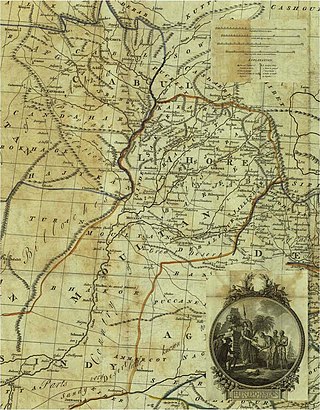
The Sikh Confederacy was a confederation of twelve sovereign states which rose during the 18th century in the Punjab region in the northern part of the Indian subcontinent and is cited as one of the causes of the weakening of the Mughal Empire prior to Nader Shah's invasion of India (1738–1740).

Gurdwara Sis Ganj Sahib is one of the nine historical Gurdwaras in Delhi. It was first constructed in 1783 as a small shrine by Baghel Singh to commemorate the martyrdom site of the ninth Sikh Guru, Tegh Bahadur and was probably expanded after Indian Rebellion of 1857 or after Partition of India. Before its construction the Mughal Kotwali was situated here. After the Indian Rebellion of 1857 the Mughal Kotwali was demolished by the British and the land was given to the Sikhs as the Maharaja of Patiala and other Sikh soldiers helped the British to defeat the Mughal soldiers by providing large numbers of ammunition and soldiers. Its current building was made by Rai Bahadur Narain Singh a contractor who build most of roads in Lutyens New Delhi construction under British Rule. Situated in Chandni Chowk in Old Delhi, it marks the site where the ninth Sikh Guru was beheaded on the orders of the Mughal emperor Aurangzeb on 11 November 1675. The Sikh regiment of the Indian army salute the Sis Ganj Gurudwara before saluting the president of India since 1979, the only instance of saluting twice in the Republic Day parade by a regiment of Indian army.
Guru Nanak founded the Sikh religion in the Punjab region of the northern part of the Indian subcontinent in the 15th century and opposed many traditional practices like fasting, Upanayana, idolatry, caste system, ascetism, azan, economic materialism, and gender discrimination.

Jassa Singh Ramgarhia (1723–1803) was a prominent Sikh leader during the period of the Sikh Confederacy. He was the founder of the Ramgarhia Misl.
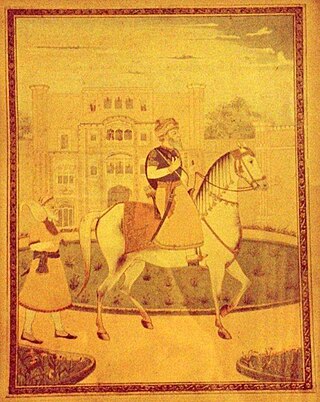
Jassa Singh Ahluwalia was a Sikh leader during the period of the Sikh Confederacy, being the Supreme Leader of the Dal Khalsa. He was also Misldar of the Ahluwalia Misl. This period was an interlude, lasting roughly from the time of the death of Banda Bahadur in 1716 to the founding of the Sikh Empire in 1801. He founded the Kapurthala State in 1772.
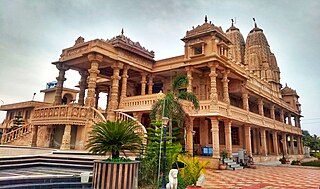
Ganaur is a town located, just 23 km from Sonipat City in Sonipat district in the state of Haryana, India.

Baghel Singh was a Military general in the Punjab region in the northern part of the Indian subcontinent in the 18th century. He rose to prominence in the area around Sutlej and Yamuna. He joined the Singh Krora Misl, one of the misls during Sikh Confederacy. In 1765, Singh became the leader of the misl.

Sirhind is the older name of Fatehgarh Sahib, a city and Sikh pilgrimage site in Punjab, India. It is situated on the Delhi to Lahore Highway. It has a population of about 60,851 . It is now a district headquarters in the state of Punjab; the name of the district is Fatehgarh Sahib.
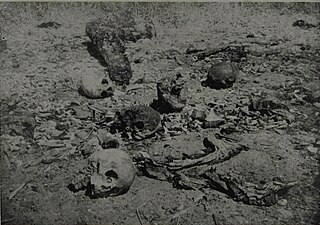
Chhota Ghallughara was a massacre of a significant proportion of the Sikh population by the Mughal Empire in 1746. The Mughal Army killed an estimated 7,000 Sikhs in these attacks while an additional 3,000 Sikhs were taken captive. Chhōtā Ghallūghārā is distinguished from the Vaddā Ghallūghārā, the greater massacre of 1762.

Vadda Ghalughara was the mass murder of unarmed Sikhs by the Afghan forces of the Durrani Empire during the years of Afghan influence in the Punjab region of the Indian subcontinent owing to the repeated incursions of Ahmad Shah Durrani in February 1762. It is distinguished from the Chhota Ghalughara. Mostly non-combatants were killed in the event, and an estimated that 10,000 to 50,000 Sikhs were killed on 5 February 1762.
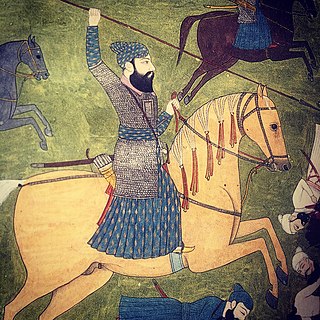
Banda Singh Bahadur, was a Sikh warrior and a general of the Khalsa Army. At age 15, he left home to become an ascetic, and was given the name Madho Das Bairagi. He established a monastery at Nānded, on the bank of the river Godāvarī. In 1707, Guru Gobind Singh accepted an invitation to meet Mughal Emperor Bahadur Shah I in southern India, he visited Banda Singh Bahadur in 1708. Banda became disciple of Guru Gobind Singh and was given a new name, Gurbaksh Singh(as written in Mahan Kosh), after the baptism ceremony. He is popularly known as Banda Singh Bahadur. He was given five arrows by the Guru as a blessing for the battles ahead. He came to Khanda, Sonipat and assembled a fighting force and led the struggle against the Mughal Empire.

Binod Singh, a Trehan Khatri and a descendant of Guru Angad, was an army man and disciple of Guru Gobind Singh and was among few Sikhs who accompanied him to Nanded in 1706. In Budha Dal Chronicles, Guru Gobind Singh made Baba Binod Singh the head of the Khalsa.
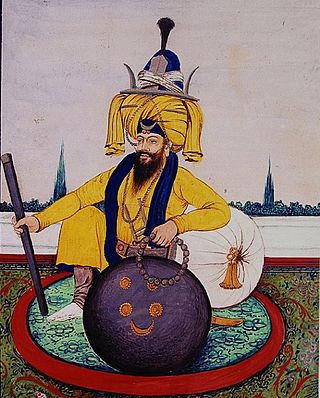
Baba Darbara Singh, also known as Diwan Darbara Singh, was second Jathedar of Budha Dal and third leader of the Akal Takht. He should not be confused with other Darbara Singh of Sirhind who fought in the Battle of Anandpur.

The Jathedar of the Akal Takht is the head of the Akal Takht and head of the Sikhs worldwide. The jathedar has the de facto power as the supreme spokesperson of the Khalsa to summon, trial and sentence any person who identifies as a Sikh from the Akal Takht.
Sikh attacks on Delhi were common in the second half of the 18th century. The Sikhs attacked Delhi 19 times between 1766 and 1788.

The Akal Sena was the Sikh military force established by the sixth Sikh Guru, Guru Hargobind. It was the first standing Sikh army. It was also known as the Akali Dal.














